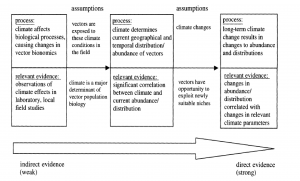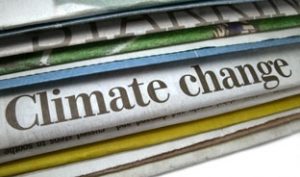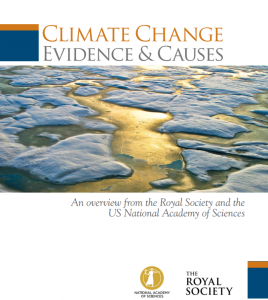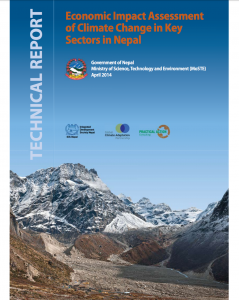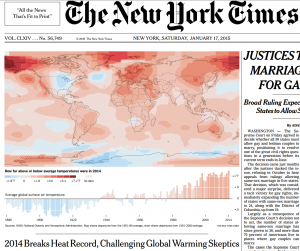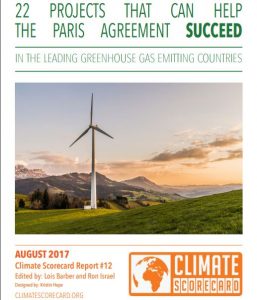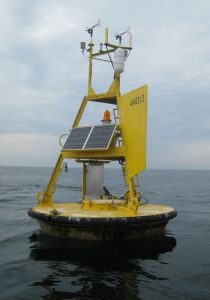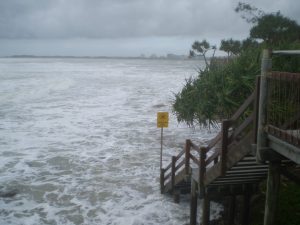
“Coastal flooding from Cyclone Hamish in Queensland 2009.” Photo Credit: Wikimedia Commons.
I consider a source of information on climate change to be credible if it strives for accuracy and clarity and makes it intentions and the process behind it clear. To ensure accuracy, the method of data collection should be carefully considered. The data should also be applied in a proper context, so that its significance is not distorted. I would want those who provide the data and analysis to be experts in the field, who have both education and experience in that subject, and are therefore likely to know what data is useful and how to apply it. Transparency is also essential because it ensures that others can judge the validity of the source for themselves: a source’s own claim to its credibility is not enough. The source should reveal the data it relies on, lay out the reasoning behind any conclusions it draws, and acknowledge areas of imperfection or uncertainty. To show that the source stands up to outside scrutiny, I would want other experts to signal their approval. Affiliation with well respected institutions helps, because it is a sign that those institutions trust the quality of the information enough to stake their own reputation on it.
When Rising Seas Hit Home is an analysis of flood threats for coastal areas in the United States. It pinpoints communities where the effects of frequent flooding are likely to severely affect people’s day to day lives. It discusses the risks these communities face and provides recommendations to prepare. The report is intended to inform people who do not have scientific expertise, and it delivers an analysis without the raw data. However, the peer-reviewed journal Elementa has published the research which backs the report’s conclusions.
The researchers clearly went through a meticulous process to collect their data. To develop a “frequency threshold” to determine which communities should receive the most attention, researchers conducted interviews with experts from affected areas (Dahl). In doing so, they ensured that the information would be held to a professional standard but also tailored to individual communities. They used tide gauges and digital elevation models to determine the frequency and extent of flooding. Predictions of sea level rise came from models initially created for the Third National Climate Assessment, which was put together for the U.S. Global Change Research Program by a group of over 300 experts and underwent thorough peer and public review (National Climate Assessment). Apparently, the models have widely been deemed relevant both for climate change analysts and the communities they wish to serve. In order to take socioeconomic factors into account, they turned to the Social Vulnerability Index, citing its “extensive use by previous studies” and the comprehensive set of variables it considers (Dahl). Clearly, the researchers sought out tools that had proven useful and reliable for other experts. By accounting for attributes of the communities themselves- not just flooding data- into their analysis, they ensured that its significance for the public was made clear.
Although they express confidence in their methods, the authors also highlight sources of uncertainty, including the wide range of possibilities for sea level rise and the margin of error for elevation and tidal measurements (Dahl). The authors have good reason to stand behind their data; however, they do not express so much confidence as to hide their mistakes.They also present a step-by-step report of the calculations and logic behind their analysis. The publication of the material in a peer-reviewed journal shows that this analysis has stood up to the criticism of other experts. The report itself also has highly qualified support. The publicly geared analysis was written for the Union of Concerned Scientists, which is led by Kenneth Kimmell (president), a legal expert who has worked in environmental policy for more than three decades, and Kathleen Rest (executive director), a health policy expert whose work has focused extensively on occupational and environmental health (Union of Concerned Scientists). These people are clearly familiar with environmental issues and their impact on the public. The organization was founded at the Massachusetts Institute of Technology (Union of Concerned Scientists). Judging by MIT’s reputation as an extremely prestigious university, I trust them to put stock only in well-founded information.
The people who developed this report certainly seem qualified to do so. Its main authors include Erika Spanger-Siegfried, who has been in charge of multiple other projects on sea-level rise, as well as other aspects of climate change. She has a graduate degree in energy and environmental analysis (Union of Concerned Scientists). Kristina Dahl, the other main author, specializes in studying the effects of coastal flooding. She has a Ph.D. in paleoclimatology, or climate history. Four of the five other contributors also specialize in climate change issues, although each has a slightly different area of expertise (Spanger-Siegfried). Their knowledge and experience goes beyond climate science to also cover adaptation methods, economics and advocacy for marginalized groups. Their varied expertise ensures that the analysis is accurate and relevant to all aspects of the issues it addresses.
Overall, I consider this report to be a credible source. Every step of its production seems to have been carefully considered by relevant experts, and it is backed by a wealth of qulaified support. It is worthy of its important role in helping coastal communities to prepare for the life-changing effects of climate change.
Works Cited
Dahl, Kristina A., Erika Spanger-Siegfried,, Astrid Caldas, and Shana Udvardy. “Effective Inundation of Continental United States Communities with 21st Century Sea Level Rise.” Elementa: Science of the Anthropocene, Vol. 5 No. 37, 2017. DOI: https://doi.org/10.1525/elementa.234.
National Climate Assessment. U.S. Global Change REsearch Program, 2014, http://nca2014.globalchange.gov/. Accessed 25 Sept. 2017.
Spanger-Siegfried, Erika, Kristina Dahl, Astrid Caldas, Shana Udvardy, Rachel Cleetus, Pamela Worth, Nicole Hernandez Hammer. When Rising Seas Hit Home: Hard Choices Ahead for US Coastal Communities. Union of Concerned Scientists, July 2017.
Union of Concerned Scientists, http://www.ucsusa.org/. Accessed 24 Sept. 2017.

